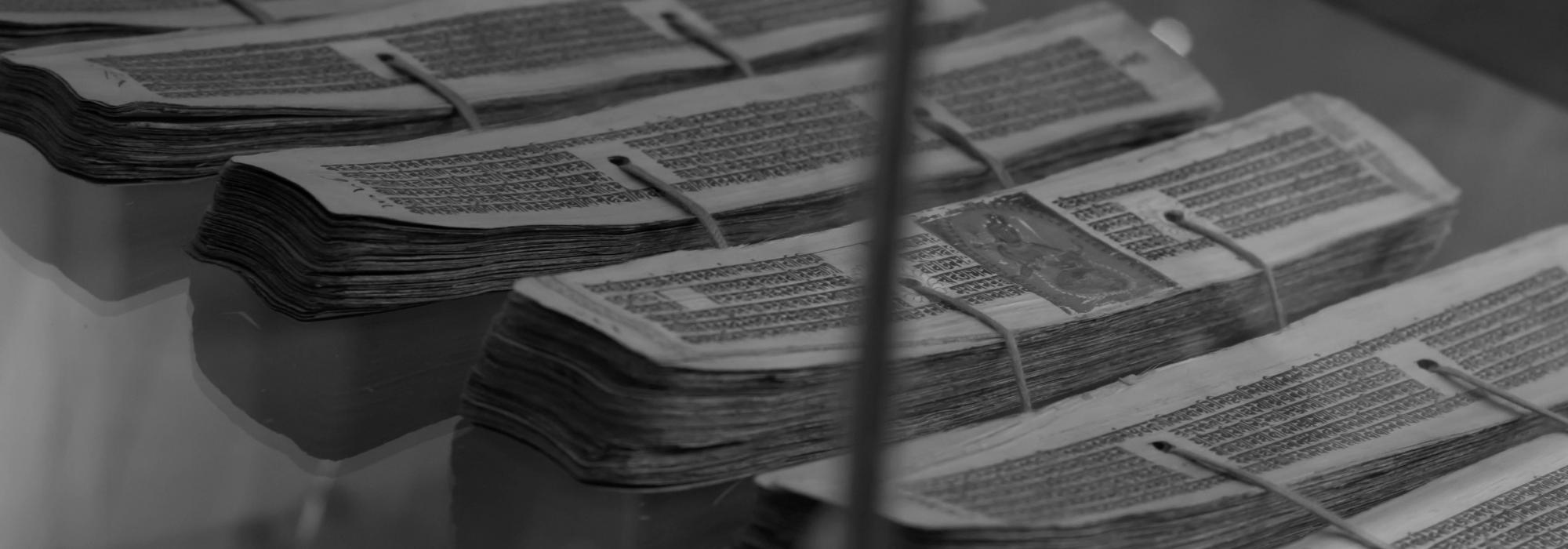Shaastra is inevitable for the learning of any art form. However, it is also true that it is almost impossible to ‘teach’ an art. Any learning that can develop only through experience cannot be ‘taught’ using external means. This can be better appreciated when seen from the perspective of Vedanta and Brahmaanubhava (the experience of the Brahman – the non-dual entity, Bliss in essence). We can use shaastra as a tool to kindle the artistic talent that is within us, which can help us realize Art within ourselves and help us share the Joy with the external world. This is an aspect that is inevitable but is hard to explain using words. It can only be realized through experience. It is for this reason that Shankaracharya says that a ‘shaastra’ is not a ‘kaaraka’ (instigator/ doer), but is a jnaapaka (reminder/ cue). Just like the portrait of a person helps us in bringing him back to our memory, shaastra too works as a memory peg; shaastra is not art, but it gives us a cue about art. (Art, although is not ‘Brahmaasvaada/ Brahmaananda’, it is something that gives us a glimpse of Bhrahmaananda. Art reminds us of Brahmaananda. It is in this connection that DVG in his ‘Antahpurageete’ says that Beauty [soundarya] acts as a reminder of the Brahman [Brahma-sanjnaapaka] for a person on a philosophical pursuit ). We need a memento in the form of a portrait or a photograph to bring the person back to our memory. We find its need until we have ‘made him one with ourselves’. Once the person has ‘become a part of us’, we don’t depend on the memento any more. However, the memento might be essential for another person. A person, after crossing a river, does not need a boat anymore, but what about the people who are waiting to get across the river? Similar is the inevitability and the need of shaastra at all times.
Shaastra is not for people who just want to parrot whatever it says but is meant for serious art pursuers. Milestones are meant for traveler and not for those who would like to just lie around gazing lazily at it.
Shankaracharya calls shaastra ‘साध्यसाधनसम्बन्धविशेषाभिव्यक्तिः’ (Brhadaaryankaya-bhaashya 2.1.20), suggesting that it does not do anything by itself, but only helps in instigating a person to work (न तु शास्त्रं भृत्यानिव बलान्निवर्तयति नियोजयति वा |... शास्त्रं तु सावितृप्रकाशवत् उदास्त एव |).
Moreover, a shaastra is unbiased and is an objective science. Like mentioned before, education is impossible without a shaastra. It instructs us only in things which we cannot possibly attain by ourselves (यदि स्वतोsप्राप्तं तच्छास्त्रेण बोधयितव्यम् – from the prologue of Shankaracharya’s commentary on Aitareyopanishat). We would not seek the guidance of a shaastra after all, for things that we can achieve by ourselves. For instance, we don’t need a shaastra to teach us how to shout or to tell us how to move our hands. However, for music and dance, shaastra is an important requirement. This shows us the uniqueness and inevitability of shaastra. It is out of their generosity to help people tread different paths that our ancient seers and thinkers (who we call ‘maharshi-s’) have written shaastras and these help us in understanding the essence of any learning. In this well-defined world, everything follows certain rules and regulations. Shaastra plays a major role in defining those rules. As shaastra only sums up all our experiences. A person with a keen eye can discern its role in every art and the joyful experience associated with it.
[contextly_sidebar id="kSZWxki68ELiPx2QfazRcwDpbzDKzuCW"]
We have seen that shaastra is essential for all systematic studies and for all arts. Shaastra can also be called a‘science’. It is true that it is fundamental to any study and is all the more important for classical learning. This is because non-classical learning usually does not give importance to tradition. Non-classical learning gives more importance to Paramparaa (continuity) than to sampradaaya (heritage). ‘Sampradaaya’ means that which has come down to us in its essence from our ancestors. (‘Sam+pra+daaya’). Shankaracharya says in his commentary on the Bhagavadgeeta (13.2) says, ‘तस्मादसम्प्रदायवित् सर्वशास्त्राविदपि मूर्खवदेव उपेक्षणीयः’ – ‘a person who does not know his heritage, even if learned in many shaastras, must be discarded as a fool’. This shows us the significance of heritage. Heritage is not something which upholds anything that is old and is against novelty. Heritage has come down to us over generations, having been approved and practiced by art experts. Though it is unwritten, it is something that can be imbibed and stands a witness to our own growth. Moreover, it stands as a testimony to the idealization of classical art. Heritage is what helps in protecting art from losing its classicality and aids in the production of rasa. One can call heritage an artistic convention. Heritage makes us aware of the futility of mere bookish knowledge and makes us aware of the importance of practice. It is the culmination of perfection. Moreover, heritage makes us aware of the cultural backdrop in which an art form has evolved. It stops us from mere intellectual pursuits and helps engage mind in creative expression. Interrogation and humble submission which form the basis of Indian philosophy and practice, find their balance in heritage.
In summary, the ideality and purity of classical arts are protected in philosophy by shaastra and in practice by heritage. However, only when these are blended with a person’s creative talent and intellectual sharpness, can they find their fruitfulness. Talent and intellect should never lose their rootedness in aesthetics and philosophy. We can understand the intricacies of any Indian knowledge system only when we look at it with this background in mind.
Adapted by Arjun Bharadwaj from the original Kannada














































